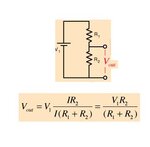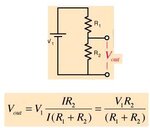expertmax
Newbie level 5

Hi everyone !
I'm looking for a basic formula to calculate the voltage after the resistor ! My circuit is composed of a resistor (4700ohm), a 12v supply and a 30A motor.
I've hooked the resistor before the motor and I'm looking for the voltage at the motor.
https://i44.tinypic.com/mb0jk4.png
Thank you !!
Max.
I'm looking for a basic formula to calculate the voltage after the resistor ! My circuit is composed of a resistor (4700ohm), a 12v supply and a 30A motor.
I've hooked the resistor before the motor and I'm looking for the voltage at the motor.
https://i44.tinypic.com/mb0jk4.png
Thank you !!
Max.





